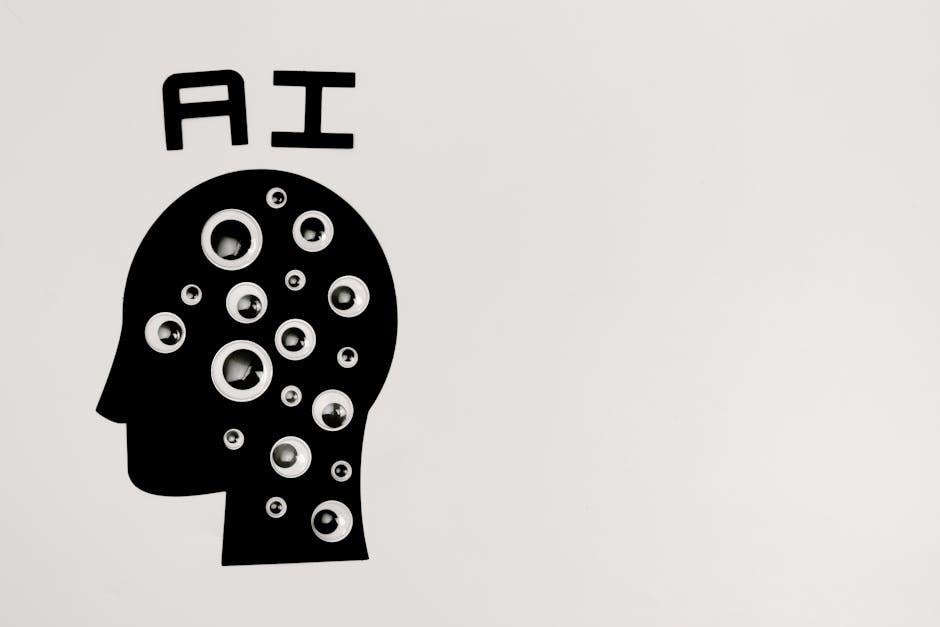In the ever-evolving landscape of technology, artificial intelligence has taken a remarkable stride beyond mere data processing, venturing into the intricate realm of human emotions. One of the most fascinating frontiers is the use of AI to detect mood from voice calls-a subtle art transformed into a scientific pursuit. By analyzing nuances in tone, pitch, and speech patterns, AI systems can now interpret the emotional undercurrents of conversations, opening new doors in customer service, mental health, and beyond. This blend of human intuition and machine precision promises to redefine how we understand and respond to the unspoken feelings woven into our everyday communication.
Understanding the Science Behind Vocal Mood Detection

At the core of vocal mood detection lies the intricate analysis of acoustic features-elements like pitch, tone, and rhythm-that convey emotions beyond mere words. Advanced algorithms dissect these vocal cues, identifying subtle changes in speech patterns that correlate with feelings such as happiness, anger, or sadness. Unlike traditional sentiment analysis, which relies solely on word choice, vocal mood detection taps into the raw, unfiltered emotional undertones embedded within a person’s voice, allowing AI to sense the layers of human expression with remarkable precision.
The AI systems utilize a combination of machine learning models and natural language processing (NLP) to interpret these vocal nuances. Here’s what the process typically involves:
- Real-time extraction of spectral features such as formants and mel-frequency cepstral coefficients (MFCCs)
- Temporal analysis to monitor changes in speech tempo and pauses
- Pattern recognition through trained neural networks that link these features to specific emotional states
| Vocal Feature | Emotional Indicator | AI Role |
|---|---|---|
| Pitch Variability | Excitement, Anger | Detects intensity levels |
| Speech Rate | Nervousness, Calmness | Analyzes tempo patterns |
| Amplitude | Confidence, Sadness | Measures volume fluctuations |
Exploring Key Technologies Powering AI Mood Analysis

At the heart of mood detection in voice calls lies a tapestry of advanced technologies. Natural Language Processing (NLP) deciphers the semantic content of speech, helping AI systems understand the emotional undertones behind words. Meanwhile, speech signal processing captures nuances such as intonation, pitch, and rhythm variations-subtle auditory cues that vocalize emotions beyond the literal transcript. These are complemented by deep learning models trained on massive datasets to distinguish between tones of joy, frustration, calm, or anxiety, enabling a more granular understanding of conversational moods in real-time.
To efficiently combine these complex data streams, AI frameworks utilize multimodal fusion techniques, which integrate acoustic features with linguistic signals, enhancing the precision of mood estimation. Key technologies powering this fusion include:
- Convolutional Neural Networks (CNNs) – for extracting patterns in audio signals
- Recurrent Neural Networks (RNNs), including LSTM and GRU – for temporal analysis of speech flow
- Transformer architectures – enabling contextual mood inference across longer conversations
The synergy of these technologies facilitates mood detection algorithms that continuously learn and adapt, making them more accurate and personalized with every interaction.
| Technology | Primary Function | Key Benefit |
|---|---|---|
| NLP | Semantic emotion extraction | Contextual understanding |
| Speech Processing | Acoustic pattern recognition | Detects voice tone & pitch |
| Deep Learning | Pattern analysis & classification | Real-time mood prediction |
| Multimodal Fusion | Integrates multiple data types | Improved accuracy |
Interpreting Emotional Cues in Real-Time Voice Conversations

Real-time voice conversations offer a rich tapestry of emotional signals that can be incredibly subtle yet profoundly telling. AI-powered systems analyze acoustic features such as pitch, tempo, volume, and speech rhythm, unraveling the emotional state behind the words spoken. These systems can detect shifts in mood-from excitement and joy to frustration and sadness-by continuously monitoring variations in vocal tone and intensity. This capability allows businesses and individuals alike to respond with greater empathy and precision, transforming standard communication into emotionally intelligent interactions.
Key indicators that AI models evaluate during live conversations include:
- Pitch Variation: Higher or fluctuating pitch often signals heightened emotions like stress or enthusiasm.
- Speech Rate: Rapid speech can indicate anxiety or excitement, while slower pacing may reflect sadness or contemplation.
- Voice Intensity: Loudness changes can reveal anger or urgency.
- Pauses and Silence: Strategic breaks might suggest hesitation or discomfort.
| Emotion | Typical Vocal Trait | Example Response Strategy |
|---|---|---|
| Frustration | Elevated pitch, abrupt tone | Offer calming reassurances |
| Joy | Higher tempo, lively volume | Engage enthusiastically |
| Sadness | Slower speech, softer voice | Provide empathetic support |
Best Practices for Ethical Implementation and User Privacy

When integrating AI to detect mood from voice calls, safeguarding user privacy must be a cornerstone of the design process. Prioritize transparency by informing users clearly about what data is being collected, how it will be used, and who will have access. Employ data minimization techniques to collect only what is essential for mood analysis, reducing exposure to sensitive information. Additionally, ensure that all voice data is encrypted both in transit and at rest, providing a robust shield against unauthorized access or breaches. Incorporating consent-driven frameworks empowers users, allowing them to opt in or out of specific data uses, fostering trust and compliance with global privacy regulations.
- Transparency: Clear communication about data usage
- Data minimization: Collect only what’s necessary
- Encryption: Protect data in transit and storage
- Consent management: User control over personal data
Beyond privacy, ethical implementation demands continuous auditing and bias mitigation to prevent unfair profiling based on voice characteristics influenced by gender, age, or cultural background. Implement diverse training datasets and validate models regularly with human oversight to maintain accuracy and fairness. The following table illustrates a simple ethical evaluation checklist that can guide teams at every stage:
| Checklist Item | Purpose | Status |
|---|---|---|
| Bias testing | Ensure fair mood detection across demographics | Ongoing |
| User consent capture | Secure explicit permission before analysis | Implemented |
| Data anonymization | Remove identifiable information post-collection | In progress |
| Audit logs | Maintain transparency on data access and changes | Planned |
Future Outlook
As voice technology continues to evolve, the fusion of AI and mood detection opens intriguing pathways into understanding human emotions through the subtle nuances of speech. While challenges around privacy and accuracy remain, the potential to create more empathetic, responsive interactions is undeniable. In a world increasingly shaped by digital connection, AI’s ability to read between the lines of our voices may soon transform not just communication, but the very way we relate to one another-one call at a time.










